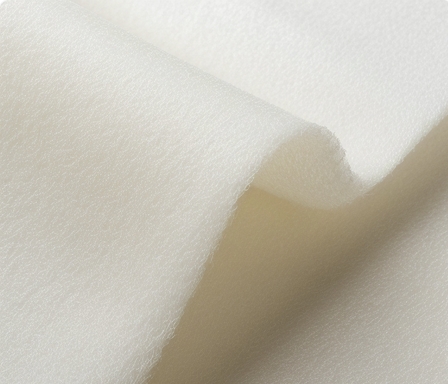Language

1.Performance benchmark of clean room core consumables The dust-free cloth standard refers to the technical specifications of professional cleaning materials suitable for ISO level 5 (level 1,000) clean environments. According to the international cleanliness classification standards, the 1,000-level clean room requires that the number of particles ≥0.5μm in each cubic meter of air is strictly controlled within 35,200. This type of environment is widely present in cutting-edge industries such as semiconductor wafer manufacturing, biologic filling, and precision optical component processing. It is worth noting that in chip manufacturing processes, even a single micron-scale dust may cause circuit short-circuiting, highlighting the key role of a thousand-level dust-free cloth in process yield control.
2. Micro breakthrough in material performance. Modern thousand-level dust-free cloth realizes a dual protection mechanism through material engineering innovation: its three-dimensional mesh fiber structure can physically intercept 0.3μm-level particles, and surface modification treatment captures finer nonlevel pollutants through electrostatic adsorption. Taking the test data of an international laboratory as an example, the plasma-treated microfiber dust-free cloth can intercept 0.1μm gold particles with a plasma treatment, which is 23 times higher than traditional materials. It is particularly important to emphasize that the non-volatile residue (NVR) index must be less than 0.1 μg/cm², which is equivalent to the amount of residues allowed to exist only about 3 grains of salt on the surface of A4 paper.
3. Accurate control of engineering applications. In actual operation of a thousand-level clean room, the wipe pressure needs to be accurately controlled in the golden range of 0.15-0.3N/cm². Trichological experiments at the Fraunhofer Institute in Germany show that when the pressure exceeds 0.5N/cm², the secondary particles generated by fiber breaking will surge by 400%. This paradoxical effect of "the more you rub, the dirtier it will directly destroy the clean environment. It is worth noting that the newly developed special-shaped cross-sectional fibers (such as Y-shaped and cross-shaped) can increase the specific surface area by 30% of the pollutant capture efficiency under the same pressure.
4. Classification guide for material selection 1. Microfiber dust-free cloth: the minimum particle size retention capacity reaches 0.1μm, suitable for nonlevel cleaning needs such as wafer cleaning 2. Anti-static dust-free cloth: the surface resistance value is<1×10^9Ω, preventing secondary pollution caused by electrostatic adsorption 3. Low precipitation dust-free cloth: NVR value <0.05μg/cm², meeting the GMP specifications of the pharmaceutical industry 4. Reel-type dust-free cloth: adopts continuous clean production process, suitable for automation equipment integration
5. Frontier breakthrough in technological development. Current materials' science has achieved mass production of 0.08μm-grade microphone fibers. One thousandth of this hair fiber is designed to form a microRNA structure similar to the surface of lotus leaves through bionic design. The latest certification data of the American Society of Materials Testing (ASTM) shows that in simulated 1,000 environmental tests, the particle release of such innovative materials is 92% lower than that of traditional products, and the wiping efficiency is improved to capture more than 5,000 effective pollutant particles per square centimeter.
The international dust-free cloth industry has recently ushered in a number of technological innovation breakthroughs. Experimental data released by well-known Japanese companies show that its new composite dust-free cloth has achieved 99 in the 0.3μm particle interception test. 9987% excellent efficiency. This achievement is thanks to the innovative design of multi-layer gradient filter structures, which are particularly suitable for precision instrument maintenance in a thousand-level clean environment, providing a reliable solution for the practical application of the thousand-level standard for dust-free cloth.
In terms of dynamic wiping performance, comparative experiments from the National Institute of Environmental Surface Technology (NEST) revealed that polyester fiber materials modified with ion implantation have shown significant advantages. After detection by laser particle counter, the material broke through the 0.3mg/m² threshold in the unit area dust generation index, reducing the release of submicron particles by 89% compared with traditional nonwoven materials. This breakthrough comes from the molecular-level fiber recombination technology, which forms a diamond-like carbon film protective layer through plasma enhanced chemical vapor deposition.
In-depth research from the Swiss Clean Materials Laboratory shows that supercritical CO2 fluid extraction technology can control the surface residue of dust-free cloth to sublevel accuracy. The industrialized treatment for 72 hours has stabilized the NVR (nonvolatile residue) value below 0.1 μg/cm², which is equivalent to the remaining contaminants with a single salt volume in the standard football field area. This level of cleanliness has exceeded the strict requirements of the semiconductor manufacturing industry for lithography maintenance materials.
The piezoelectric smart materials announced by the Samsung Comprehensive Technology Institute in South Korea have attracted industry attention. The active anti-static dust-free cloth developed by it generates a reverse potential in real time through the frictional electric effect, and the electrostatic neutralization efficiency is 300% higher than that of traditional passive materials. Experimental data show that during continuous operation, the material can dynamically control the surface potential within the ±5V safe range, effectively avoiding potential damage to precision electronic components by electrostatic discharge.
It is worth noting that the current dust-free cloth level 1,000-level standard has not yet formed a unified national standard, and exclusive acceptance standards can be formulated in accordance with specific process requirements in each application field. It is recommended that enterprises focus on core parameters such as particle retention efficiency, chemical residue indicators and electrostatic control capabilities of the material when selecting the model. If necessary, suppliers can be required to provide verification reports issued by third-party testing agencies.
Tags:
RELATED RESOURCES

From clean room to operating room: 7 application forbidden areas where dust-free cloth and non-woven
In the fields of industry and people's livelihood, although dust-free cloth and non-woven fabric are simil......
More

Application of reel dust-free cloth in display panel manufacturing: 0.5mm precision cleaning solutio
In the fields of advanced manufacturing and microelectronics, submicron pollution control is directly related ......
More

The two exhibitions concluded | WIPE STAR reshapes the new cleanliness standard with the power of sm
March 26-28, 2025The global semiconductor and electronics manufacturing industry focuses on ShanghaiTwo major ......
More

Detailed explanation of professional-grade anti-static dust-free cloth selection technology
Surface resistance: The basic parameters of electrostatic protection The core performance of anti-static dust-......
More
Related Products
Room 101, Building 1, Angeer Factory, No.4, Hetian Road, Shatian Community, Kengzi Street, Pingshan District, Shenzhen, Guangdong, P.R. China 518122
info@wipestar.com
+86-755-89616775
+86-755-89616773
Related Products
RELATED RESOURCES

From clean room to operating room: 7 application forbidden areas where dust-free cloth and non-woven
In the fields of industry and people's livelihood, although dust-free cloth and non-woven fabric are simil.........
More

Application of reel dust-free cloth in display panel manufacturing: 0.5mm precision cleaning solutio
In the fields of advanced manufacturing and microelectronics, submicron pollution control is directly related .........
More
WIPESTAR
微信官方公众号